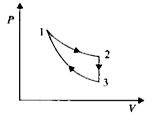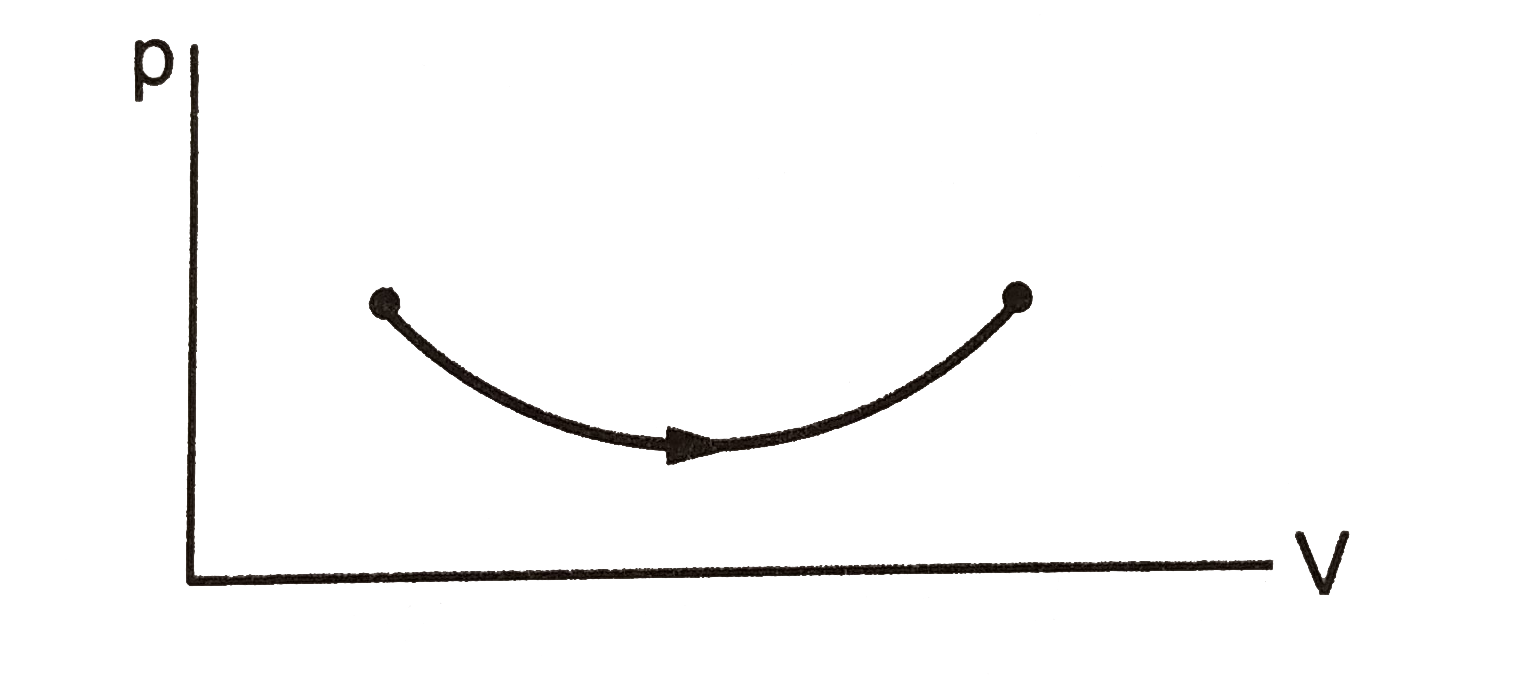In the P-V diagram (Fig 15.14.1) given below, three thermodynamic processes occur for an ideal gas. Processes 1→2,2→3and3→1 are isothermal, isochoric and adiabatic processes respectively. The total amt of work done is 10 J. During the process 3→1, 20 J of work is done on the system. The amount of heat added to the system during the process 1→2 is

30 J
20 J
10 J
0 J
The correct Answer is:A
Step by step video, text & image solution for In the P-V diagram (Fig 15.14.1) given below, three thermodynamic processes occur for an ideal gas. Processes 1 to 2, 2 to 3 and 3 to 1 are isothermal, isochoric and adiabatic processes respectively. The total amt of work done is 10 J. During the process 3 to 1, 20 J of work is done on the system. The amount of heat added to the system during the process 1 to 2 is by Physics experts to help you in doubts & scoring excellent marks in Class 11 exams.
Updated on:21/07/2023Topper's Solved these Questions
- COMPETITION CARE UNITBOOK - ICSECHAPTER - COMPETITION CARE UNITEXERCISE - OBJECTIVE QUESTIONS FROM PREVIOUS IAS EXAMINATIONS
50 Videos
- COMPETITION CARE UNITBOOK - ICSECHAPTER - COMPETITION CARE UNITEXERCISE - WAVES
98 Videos
- CIRCULAR MOTION BOOK - ICSECHAPTER - CIRCULAR MOTION EXERCISE - MODULE 2 (FROM ROTATIONAL KINETIC ENERGY , WORK ,POWER)
24 Videos
- DIMENSIONSBOOK - ICSECHAPTER - DIMENSIONSEXERCISE - SELECTED PROBLEMS (FROM CONVERSIONS OF ONE SYSTEMS OF UNITS INTO ANOTHER)
9 Videos
Similar Questions
Knowledge Check
A system is provided 50 J of heat and work done on the system is 10 J. The change in internal energy during the process is
A40 JB60 JC80 JD50 J.The work done in adiabatic process is given by
AnR(T1)−T2γBnR(T1)−T2γ−1C(nR(T1)−T2)RDγ(T1)−T2RnAn ideal gas system undergoes an isothermal process, then the work done during the process is
AnRTln(V2V1)BnRTln(V1V2)C2nRTln(V2V1)D2nRTln(V1V2)
In a process, 701 J of heat is absorbed by a system and 394 J of work is done by the system. What is the change in internal energy of the process?
View SolutionFig. shows a process ABCA performed on 1 mole of an ideal gas. Find the net heat supplied to the gaseous system during the process.

View SolutionIn a process, 701J of heat is absorbed by a system and 394J of work is done by the system. What is the change in internal energy for the process?
View SolutionIn a cyclic process, work done by the system is
View SolutionThe work done by 1 mole of ideal gas during an adiabatic process is (are ) given by :
View Solution

